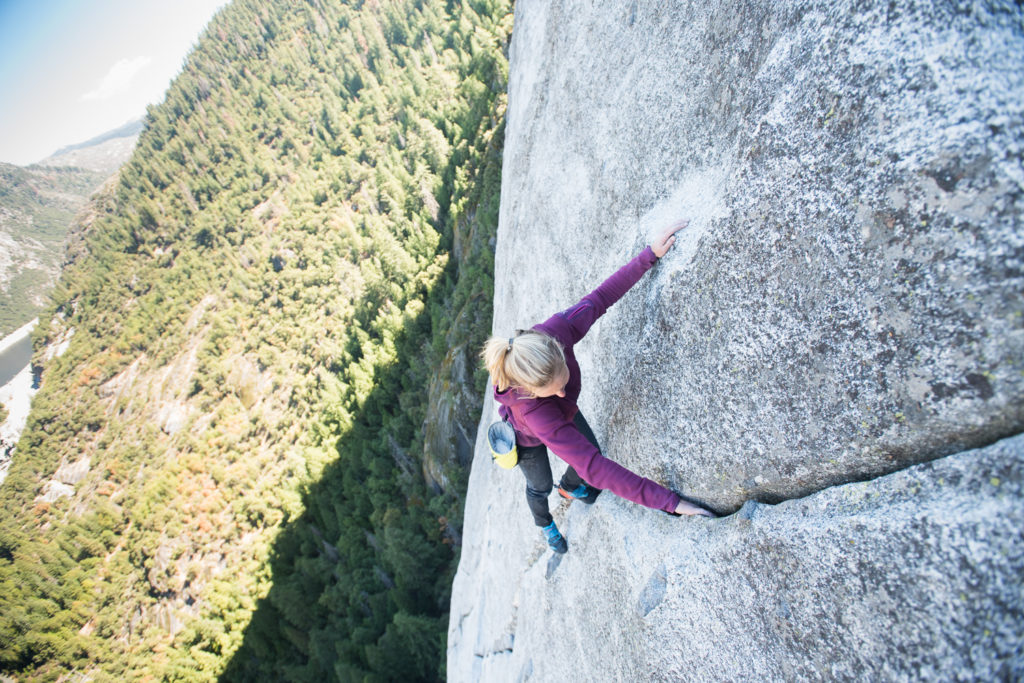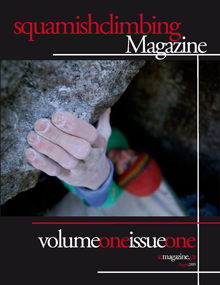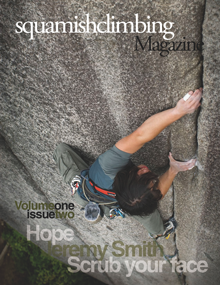As part of the Vancouver International Mountain Film Festival, Brette Harrington will be bringing down the curtain on Saturday, Feb. 18th, 2017.
Raised in the mountains of Lake Tahoe, Brette first found herself immersed in skiing as a child. After years of competitive ski racing, Brette first found climbing while attending a boarding school in New Hampshire designed for sports athletes. Years later, while attending the University of British Columbia, Brette had the opportunity to sample the granite splitters of the Sea to Sky where she began to push her own limits, sending a number off difficult routes, including The Shadow (5.13a) and The Edge of Pan (5.13b), while putting up a few first ascents of her own. With her skills in tow, Brette hit the media spotlight after soloing Chiaro Di Luna, 11a, 750m in Patagonia. Recently featured in this year’s Reel Rock tour, Brette continues to push the limits of her climbing through a number of big wall experiences. Fresh off a trip from Patagonia (literally yesterday), Brette still has the fire in her eyes as she settles into the West Coast winter with plans for a few mixed climbing adventures in the North Cascades. We had a chance to catch up with Brette before tomorrow nights show and here is what she had to say.
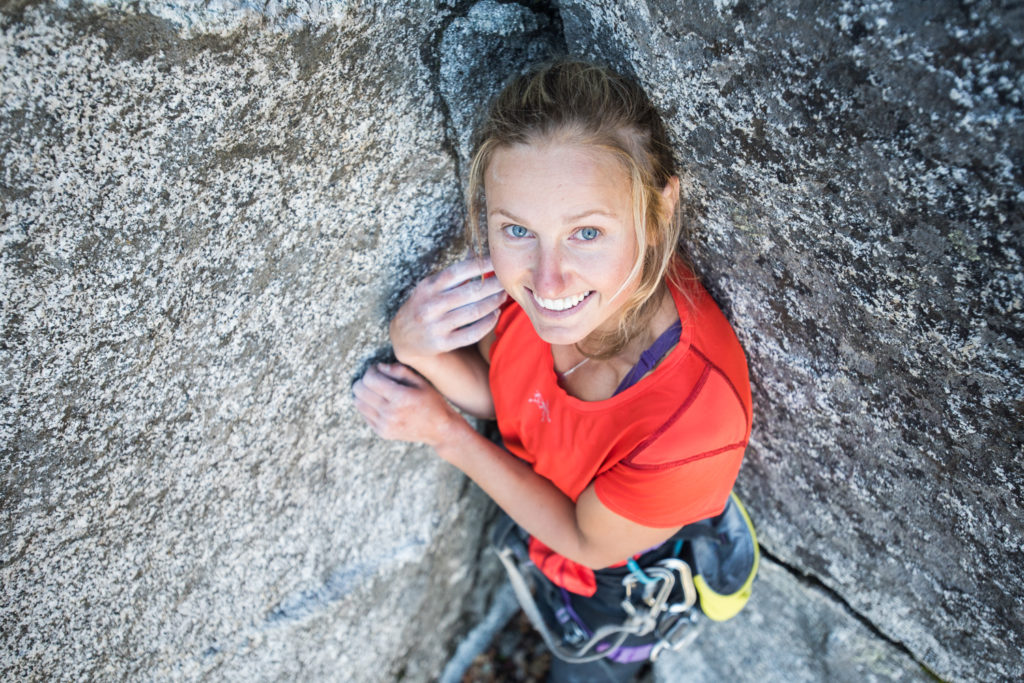
Brette Harrington. Photo courtesy of VIMFF ©
Hi Brette, thanks again for taking the time to chat with us. You literally just got back from Patagonia! Can you tell us about the trip and some of your objectives this time around?
I was down in Patagonia at the southern tip of Chile in a National park called Torres Del Paine. I went down with Mayan Smith-Gobat. Originally our objective was to attempt to free climb Riders on the Storm. A 1,300m route up the East face of Torre Central. Last season Mayan had discovered a possible free variation around some of the aid pitches, but they were unable to climb them. She and I returned this season to complete her work from last year. Unfortunately the entire region of Patagonia was hit terrible weather and storms all season. Within the 6 weeks of our expedition we only had one and a half days of decent climbing weather.
Our objective changed within the first two weeks, as we decided it would not be feasible to free the route in the winter conditions. We then spent our time working our way up the face by using mixed climbing and aid techniques. In our last week climbing, we made it to the ‘unfreed’ crux pitches and were able to work on them for those one and half days. Good new is that we were able to do all of the moves and are very close to the send. We did not have the conditions to climb them on lead more than once. I found a new variant pitch that would avoid a broken section.
Six weeks with only one and half days of good weather? How did you guys fill the time?
We climbed though the bad weather as best we could. So we were always working upwards even though the progress was slow. The hiking is spectacular around the park as well, and we played around on the boulders.
I want to talk a bit about Patagonia because it seems it has really grown in popularity over the past few years. Does it feel like that when you are there?
I have noticed a great change in the town of El Chaltén within the past two seasons I have been there. It does deter me from wanting to climb there during the high season. This year, I was in Torres del Paine where very few climbers go. There have been less climbing teams in the Paine than there were 20 years ago.
With so many people around, does it normalize the inherent risks of alpine climbing?
Yes, I think that people who are not aware of the risks are now entering into these rugged environments without enough awareness of the conditions in which objective hazard is increased. They are finding themselves in dangerous situations, often without even knowing the risks they are putting themselves in.
I want to talk a little about free soloing and your experiences up until this point. After making a notable free solo of Chiaro Di Luna, has free soloing become something that you do often or is it really an outlier in your climbing persona?
Soloing has been part of my climbing since I began Alpine climbing. It is a part of climbing that I really enjoy. I continue to solo and have solo projects all over the place. Its no more or no less prevalent in my climbing than big walls, or red pointing.
What do you get from free soloing on a personal level that you just can’t capture when climbing with a partner?
I get a different perspective of the mountains when I am alone with my own thoughts. I really enjoy the climbing headspace that free soloing provokes as well as the physical movement. That said, I equally enjoy the headspace of rope climbing and pushing my limits.
Have you gotten better at assessing your own personal limits and control and has soloing made you better at assessing risk in your regular climbing life?
Yes, I think free soloing has enabled me to formulate the boundary of my personal limits to decide exactly what terrain I will be able to climb without falling. Many times I have entered into my free soloing headspace when I am rope climbing on loose rock, or when I can’t find protection. It has helped me get through pitches where I would have otherwise not been comfortable.
You have always grown up in the mountains. What does it mean to you, as you build your confidence and skill in the mountains, to know that you can ‘choose your own adventure’ in a number of the world’s greatest playgrounds?
I have spent my entire life around the mountains and it is where I feel most at home. As I continue to grow, as an alpinist and skier, I am learning new skills and applying these strategies to be able to climb walls in the most enjoyable way.
You and Marc-Andre (Leclerc) put up a route this summer on the Chinese Puzzle Wall across from Mt. Slesse. Can you tell us a bit about the route and the experience you had up there?
The Chinese Puzzle Wall has been a wall both Marc and I had been wanting to climb for years. This past August we approached the wall with our big wall gear and established the first route up the 11 pitch face. The lines is exceptionally steep and the most sustained line I have yet to establish. The summer was hot and I lost the skin on my finger tips quickly. I also lost the rubber in my toes which made the technical climbing more challenging. Apart from that we set the line ground up without the use of fixed ropes. We climbed it using aid to clean out the cracks, then would free climb each newly cleaned pitch. We are both very proud of the beautiful climb we named Hidden Dragon, 11 pitches, 5.12b.
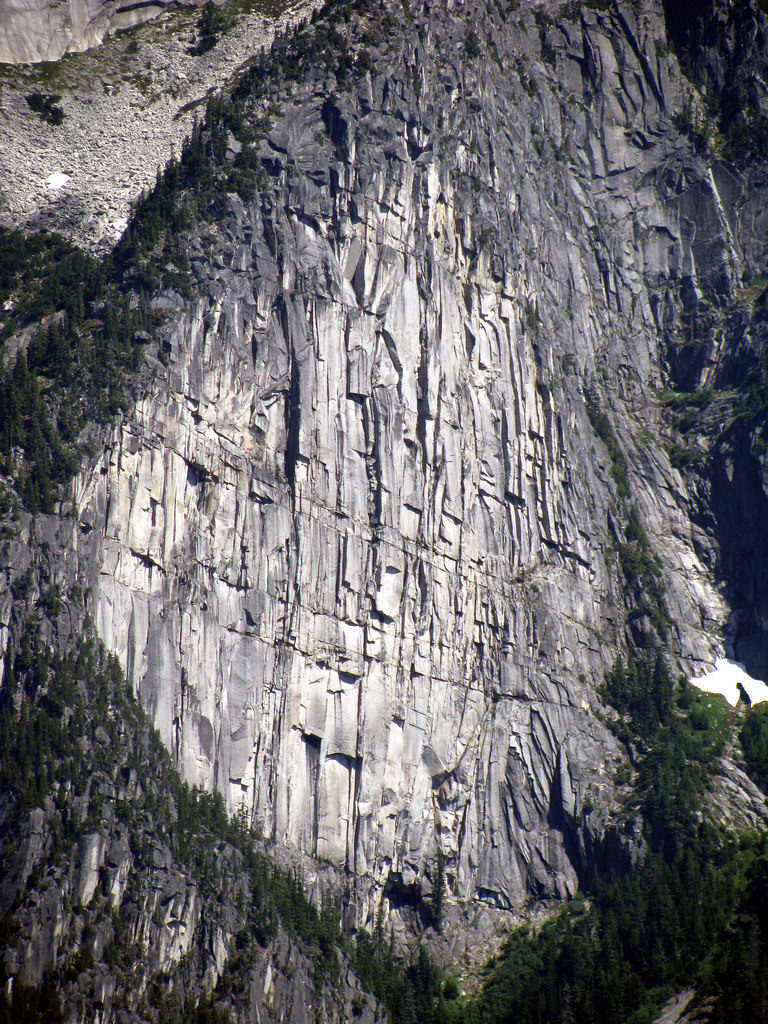
Chinese Puzzle Wall. Photo by Drew Brayshaw (cc)
What first drew you to the Chinese Puzzle Wall?
We spotted the wall while climbing across the valley on Mt. Slesse. It looked steep and beautiful.
Did the line stick out from the beginning or was there some searching for what you envisioned?
The lines on the wall are very obvious. They follow splitter crack systems and dihedrals so it was up to us to chose which line looked the best.
Is development something you really love doing and do you have any development projects that you are coming back to this year?
I love the adventure aspect of first ascents. There is something special about exploring terrain that has never been touched, and I am more connected with the climbs that I personally found.
Speaking of Marc, both of you seem to have found a good balance of your own climbing goals and objectives as well as finding objectives to do together. Is this a conscious choice for both of you and how do you find the balance between being both sometimes together and sometimes apart?
Marc and I have a good balance going at the moment. We have our projects that we are both psyched on, but also our interests veer apart. Marc is a strong alpinist and needs to follow his passion there and I too need to follow by passions for rock climbing and big walls. Luckily, I also enjoy alpine climbing and he also enjoys big walls so we cross over frequently.
Recently, you were featured in Reel Rock 11. Have you at all felt the impact of this type of exposure to the greater climbing community?
I notice the increase in attention on my social media feeds, but in life, I haven’t noticed any changes.
Does it feel that there is more of a spotlight on your climbing and how do you deal with other peoples expectations?
I haven’t noticed much of a spotlight on my climbing, or at least not excessively. It may be just that I don’t spend much time with the media side of climbing besides for work.
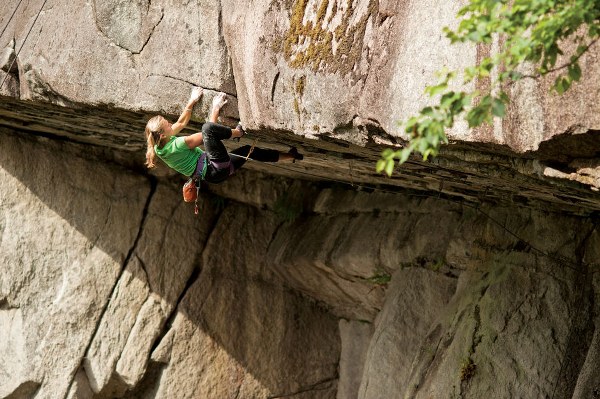
Brette on Zombie Roof (5.12d) Squamish, BC. Photo by Rich Wheater ©
Lastly, what are you looking forward to the most being home?
I’m really looking forward to heading into the mountains and doing some alpine climbing. My time in Patagonia got me really psyched on mixed climbing. Marc and I have some really cool ideas in the North Cascades this month, and I am also looking forward to spending time in the Rockies to climb some of the alpine routes out there.
Well thanks again for you time Brette! We are really looking forward to your presentation!
Brette will be presenting at the VIMFF Finale Show on Saturday, February 18th at Centennial Theatre in North Vancouver starting at 730pm. To get tickets, please visit the VIMFF website sooner than later!
